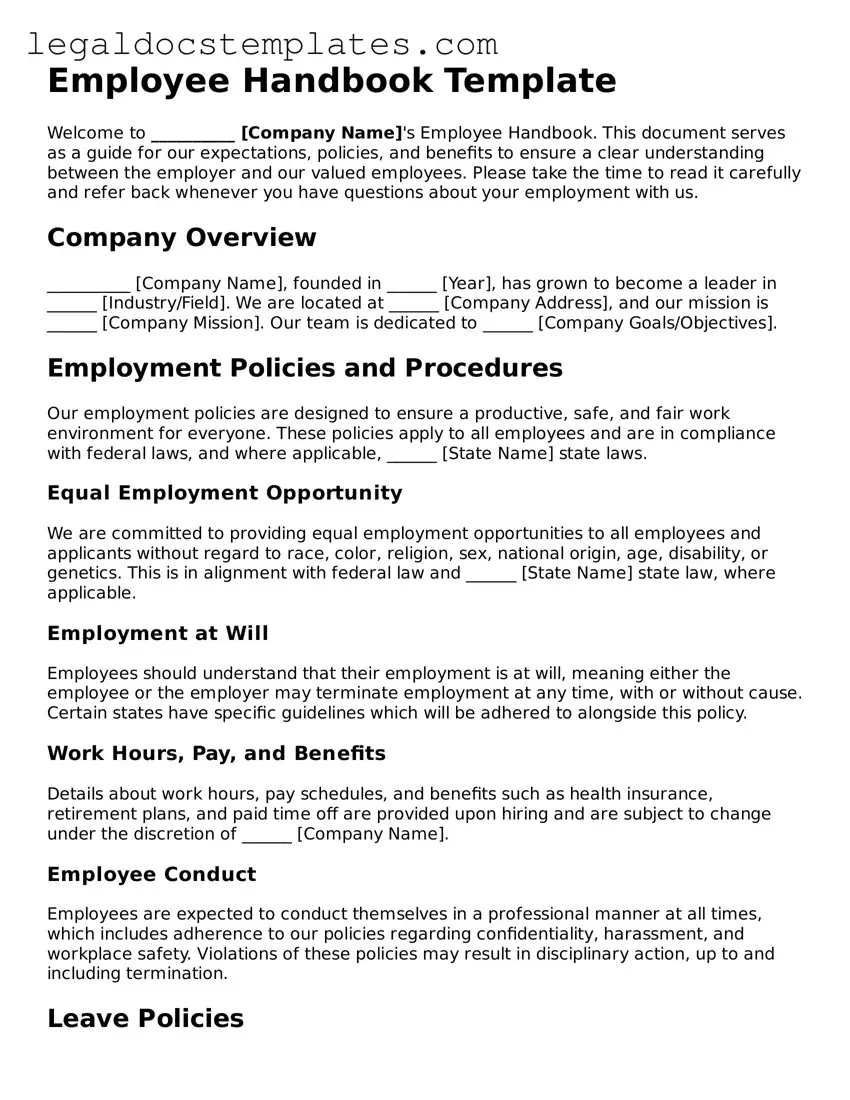Employee Handbook Template
Welcome to __________ [Company Name]'s Employee Handbook. This document serves as a guide for our expectations, policies, and benefits to ensure a clear understanding between the employer and our valued employees. Please take the time to read it carefully and refer back whenever you have questions about your employment with us.
Company Overview
__________ [Company Name], founded in ______ [Year], has grown to become a leader in ______ [Industry/Field]. We are located at ______ [Company Address], and our mission is ______ [Company Mission]. Our team is dedicated to ______ [Company Goals/Objectives].
Employment Policies and Procedures
Our employment policies are designed to ensure a productive, safe, and fair work environment for everyone. These policies apply to all employees and are in compliance with federal laws, and where applicable, ______ [State Name] state laws.
Equal Employment Opportunity
We are committed to providing equal employment opportunities to all employees and applicants without regard to race, color, religion, sex, national origin, age, disability, or genetics. This is in alignment with federal law and ______ [State Name] state law, where applicable.
Employment at Will
Employees should understand that their employment is at will, meaning either the employee or the employer may terminate employment at any time, with or without cause. Certain states have specific guidelines which will be adhered to alongside this policy.
Work Hours, Pay, and Benefits
Details about work hours, pay schedules, and benefits such as health insurance, retirement plans, and paid time off are provided upon hiring and are subject to change under the discretion of ______ [Company Name].
Employee Conduct
Employees are expected to conduct themselves in a professional manner at all times, which includes adherence to our policies regarding confidentiality, harassment, and workplace safety. Violations of these policies may result in disciplinary action, up to and including termination.
Leave Policies
Our leave policies, including sick leave, parental leave, and vacation time, are designed to support the well-being of our employees while balancing the needs of our company. These policies are in accordance with federal and ______ [State Name] state laws, where applicable.
Acknowledgment
By remaining employed at ______ [Company Name], you acknowledge that you have received, read, and understood this Employee Handbook. You agree to adhere to the policies and procedures outlined within this document and understand that it may be updated from time to time, with notification provided by the company.
Employee Signature: ___________________________
Date: ___________________________
